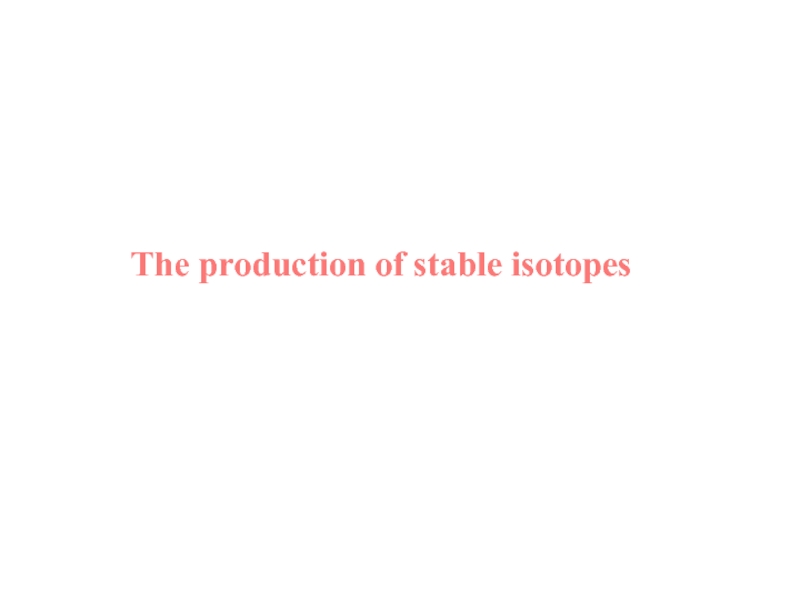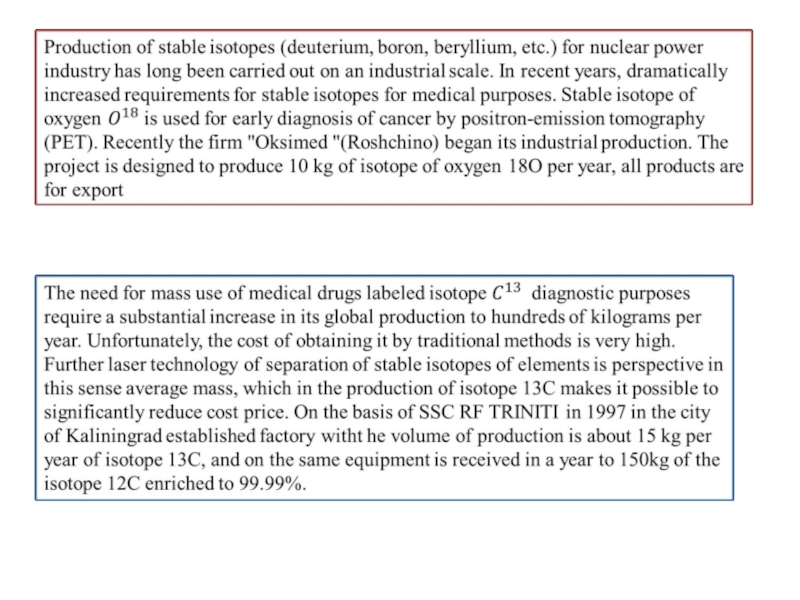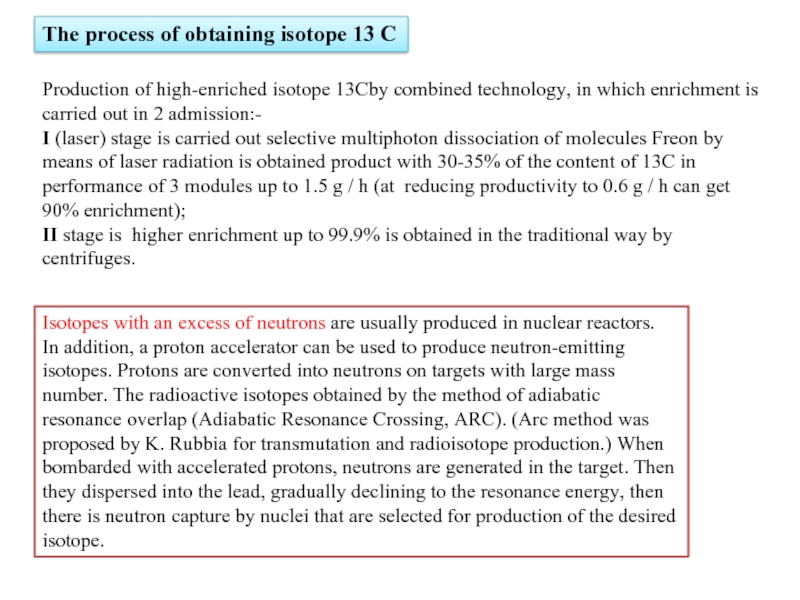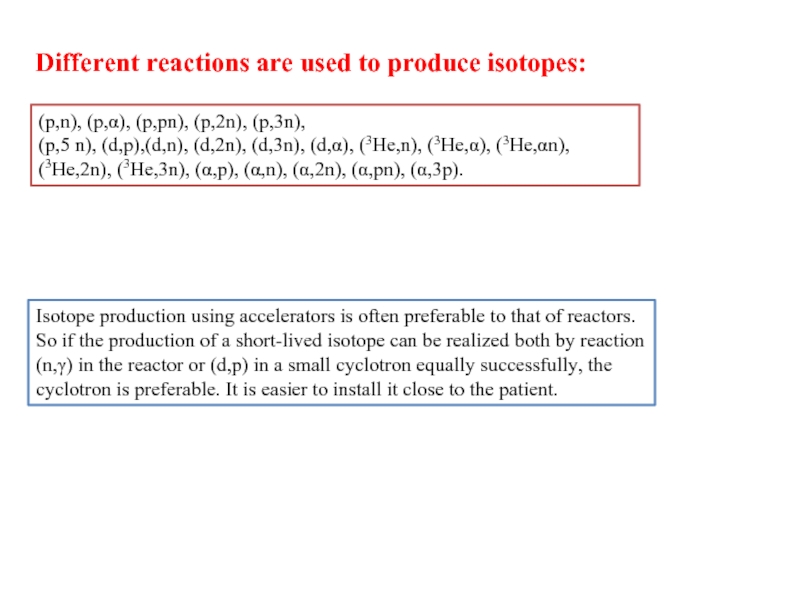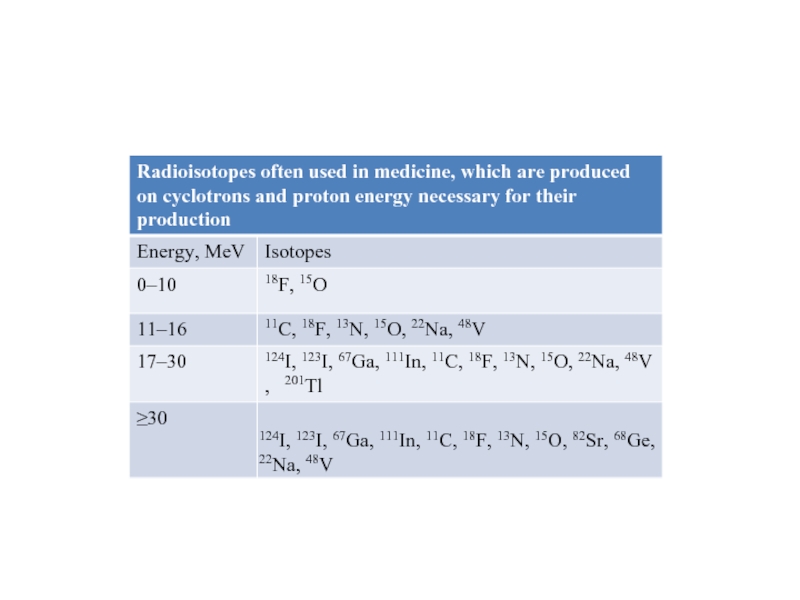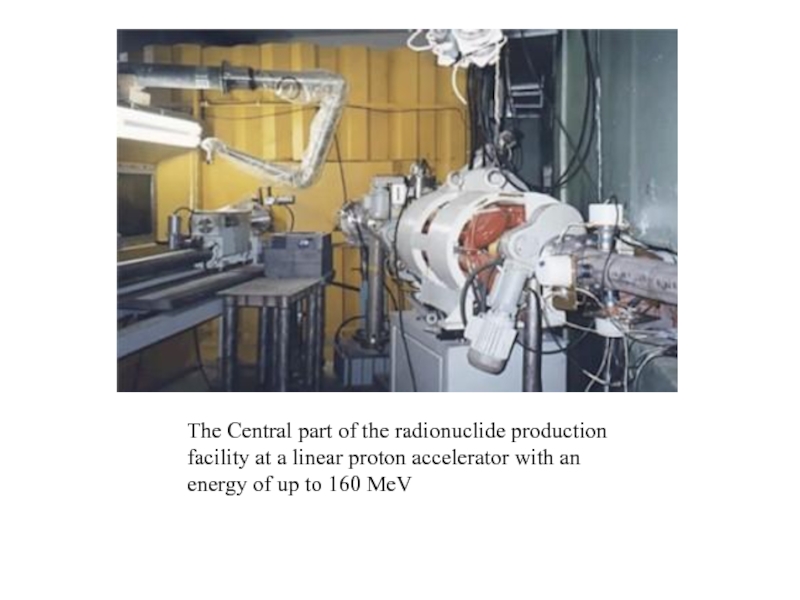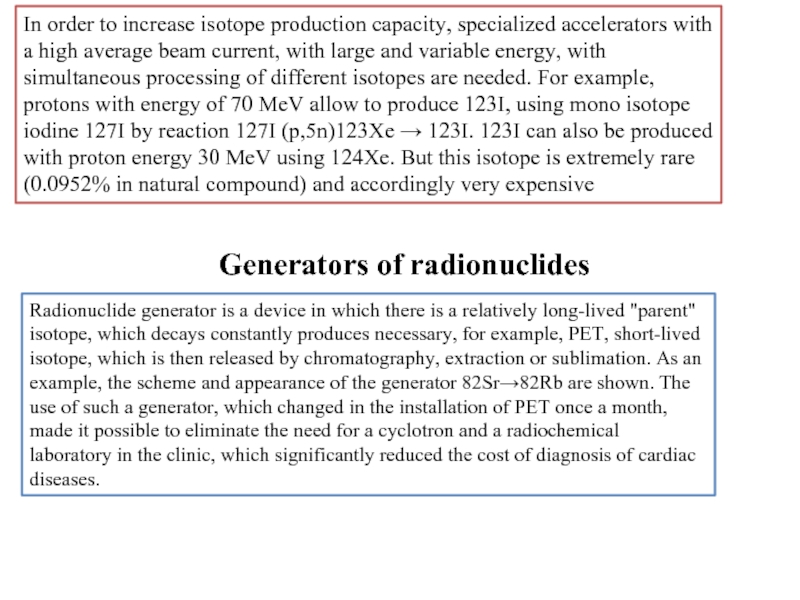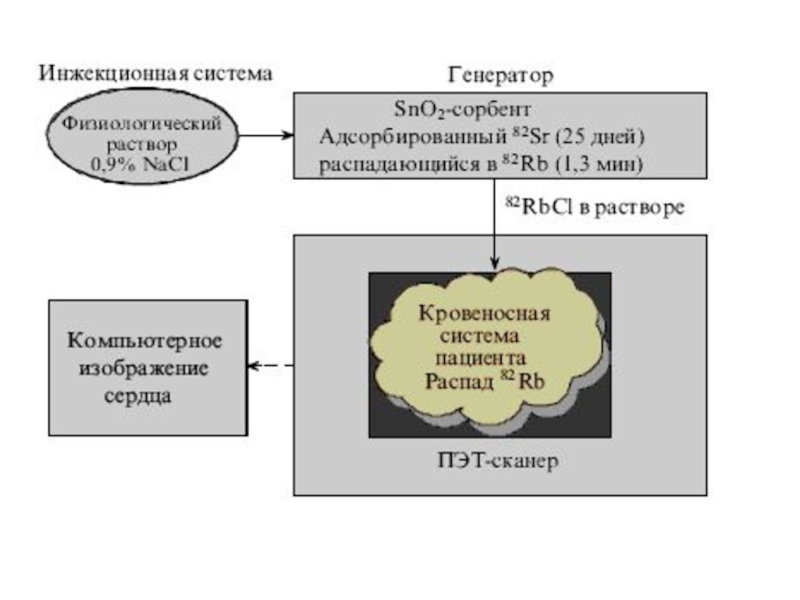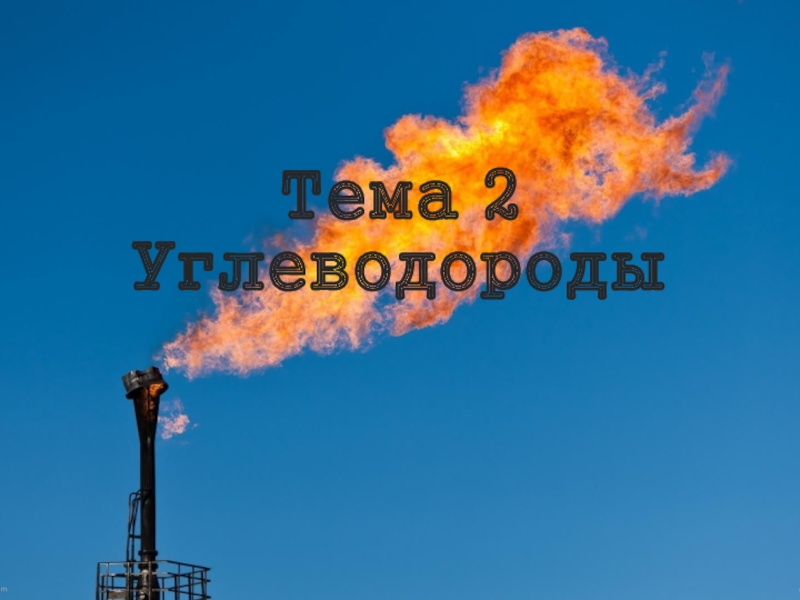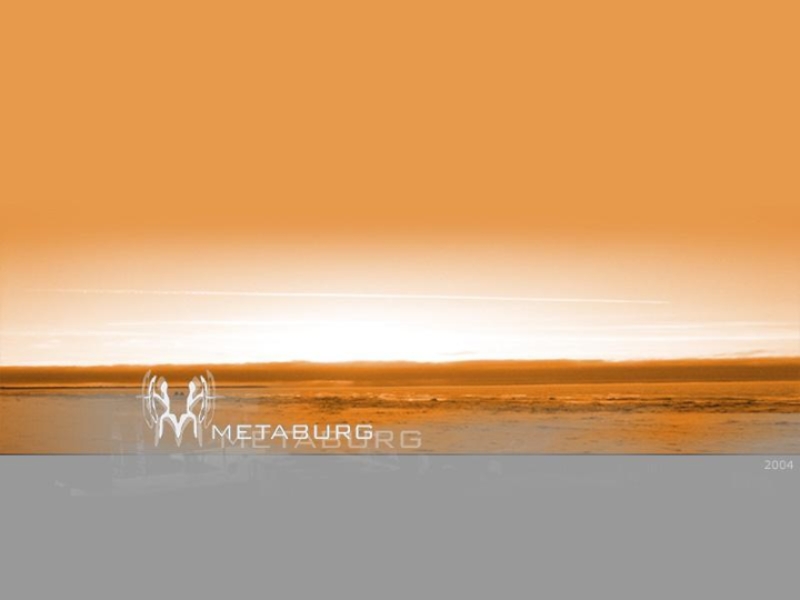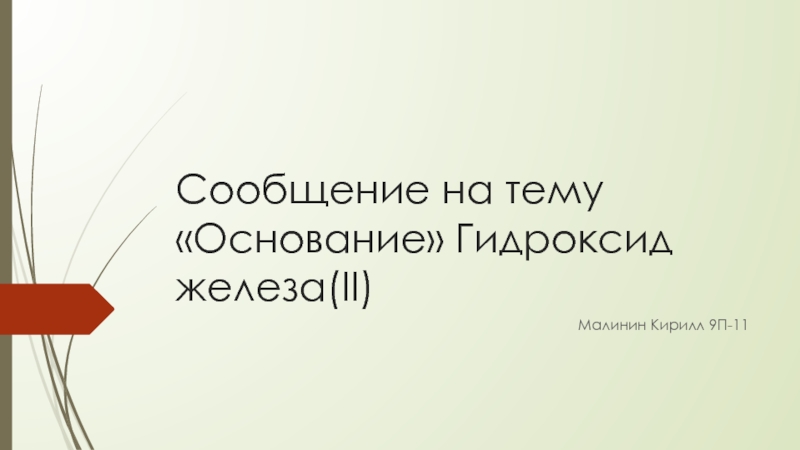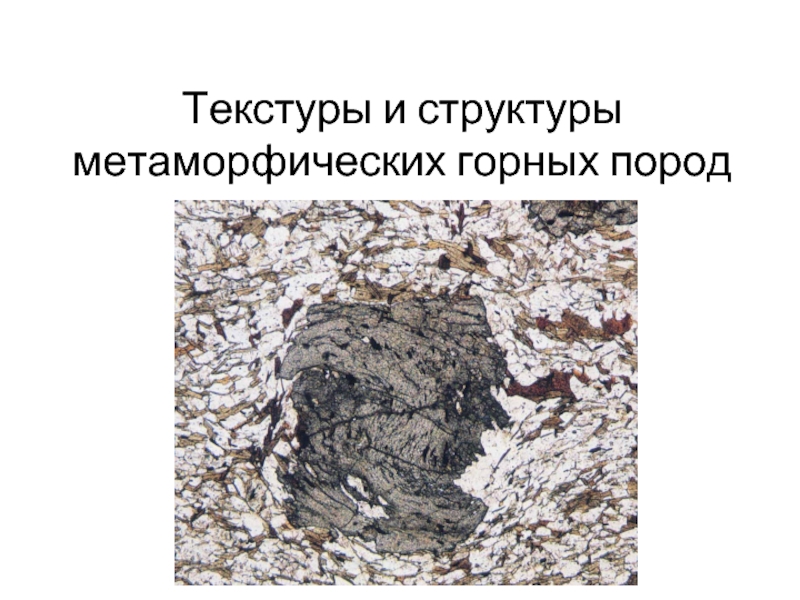- Главная
- Разное
- Дизайн
- Бизнес и предпринимательство
- Аналитика
- Образование
- Развлечения
- Красота и здоровье
- Финансы
- Государство
- Путешествия
- Спорт
- Недвижимость
- Армия
- Графика
- Культурология
- Еда и кулинария
- Лингвистика
- Английский язык
- Астрономия
- Алгебра
- Биология
- География
- Детские презентации
- Информатика
- История
- Литература
- Маркетинг
- Математика
- Медицина
- Менеджмент
- Музыка
- МХК
- Немецкий язык
- ОБЖ
- Обществознание
- Окружающий мир
- Педагогика
- Русский язык
- Технология
- Физика
- Философия
- Химия
- Шаблоны, картинки для презентаций
- Экология
- Экономика
- Юриспруденция
The production of stable isotopes презентация
Содержание
Слайд 4The process of obtaining isotope 13 C
Production of high-enriched isotope 13Cby
I (laser) stage is carried out selective multiphoton dissociation of molecules Freon by means of laser radiation is obtained product with 30-35% of the content of 13C in performance of 3 modules up to 1.5 g / h (at reducing productivity to 0.6 g / h can get 90% enrichment);
II stage is higher enrichment up to 99.9% is obtained in the traditional way by centrifuges.
Isotopes with an excess of neutrons are usually produced in nuclear reactors. In addition, a proton accelerator can be used to produce neutron-emitting isotopes. Protons are converted into neutrons on targets with large mass number. The radioactive isotopes obtained by the method of adiabatic resonance overlap (Adiabatic Resonance Crossing, ARC). (Arc method was proposed by K. Rubbia for transmutation and radioisotope production.) When bombarded with accelerated protons, neutrons are generated in the target. Then they dispersed into the lead, gradually declining to the resonance energy, then there is neutron capture by nuclei that are selected for production of the desired isotope.
Слайд 5Different reactions are used to produce isotopes:
(p,n), (p,α), (p,pn), (p,2n), (p,3n),
(p,5
Isotope production using accelerators is often preferable to that of reactors. So if the production of a short-lived isotope can be realized both by reaction (n,γ) in the reactor or (d,p) in a small cyclotron equally successfully, the cyclotron is preferable. It is easier to install it close to the patient.
Слайд 7The Central part of the radionuclide production facility at a linear
Слайд 8In order to increase isotope production capacity, specialized accelerators with a
Generators of radionuclides
Radionuclide generator is a device in which there is a relatively long-lived "parent" isotope, which decays constantly produces necessary, for example, PET, short-lived isotope, which is then released by chromatography, extraction or sublimation. As an example, the scheme and appearance of the generator 82Sr→82Rb are shown. The use of such a generator, which changed in the installation of PET once a month, made it possible to eliminate the need for a cyclotron and a radiochemical laboratory in the clinic, which significantly reduced the cost of diagnosis of cardiac diseases.
